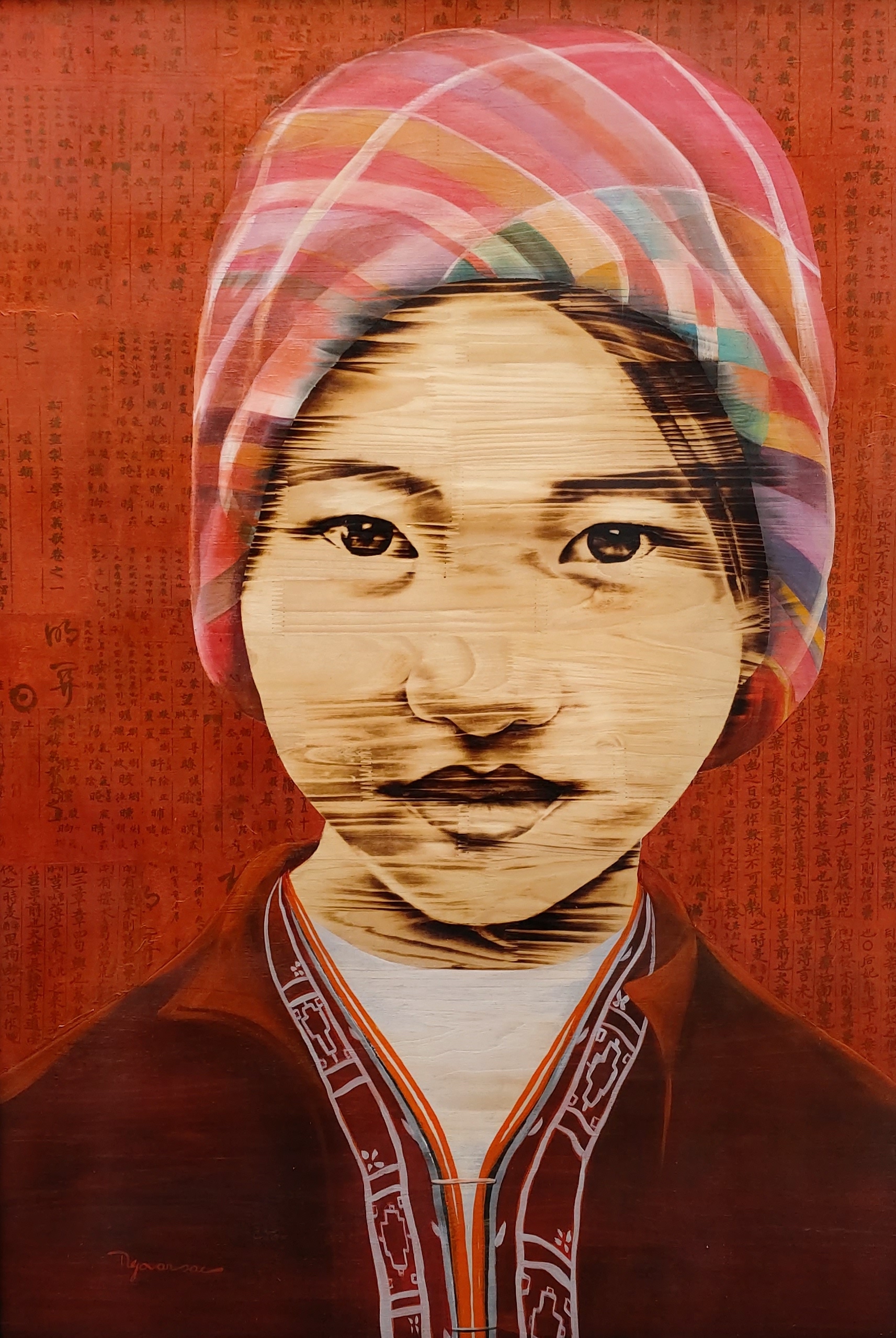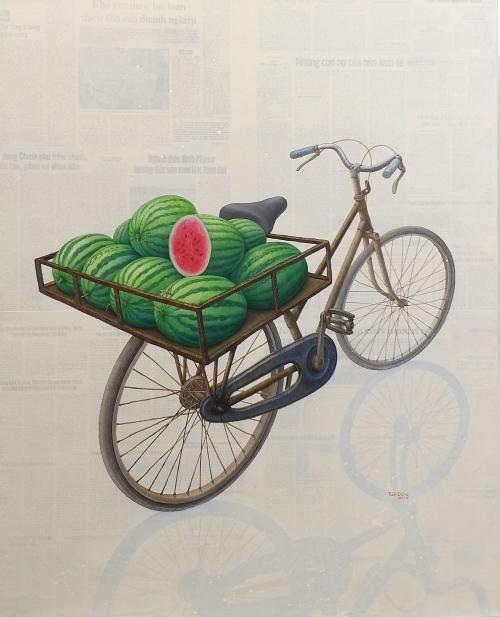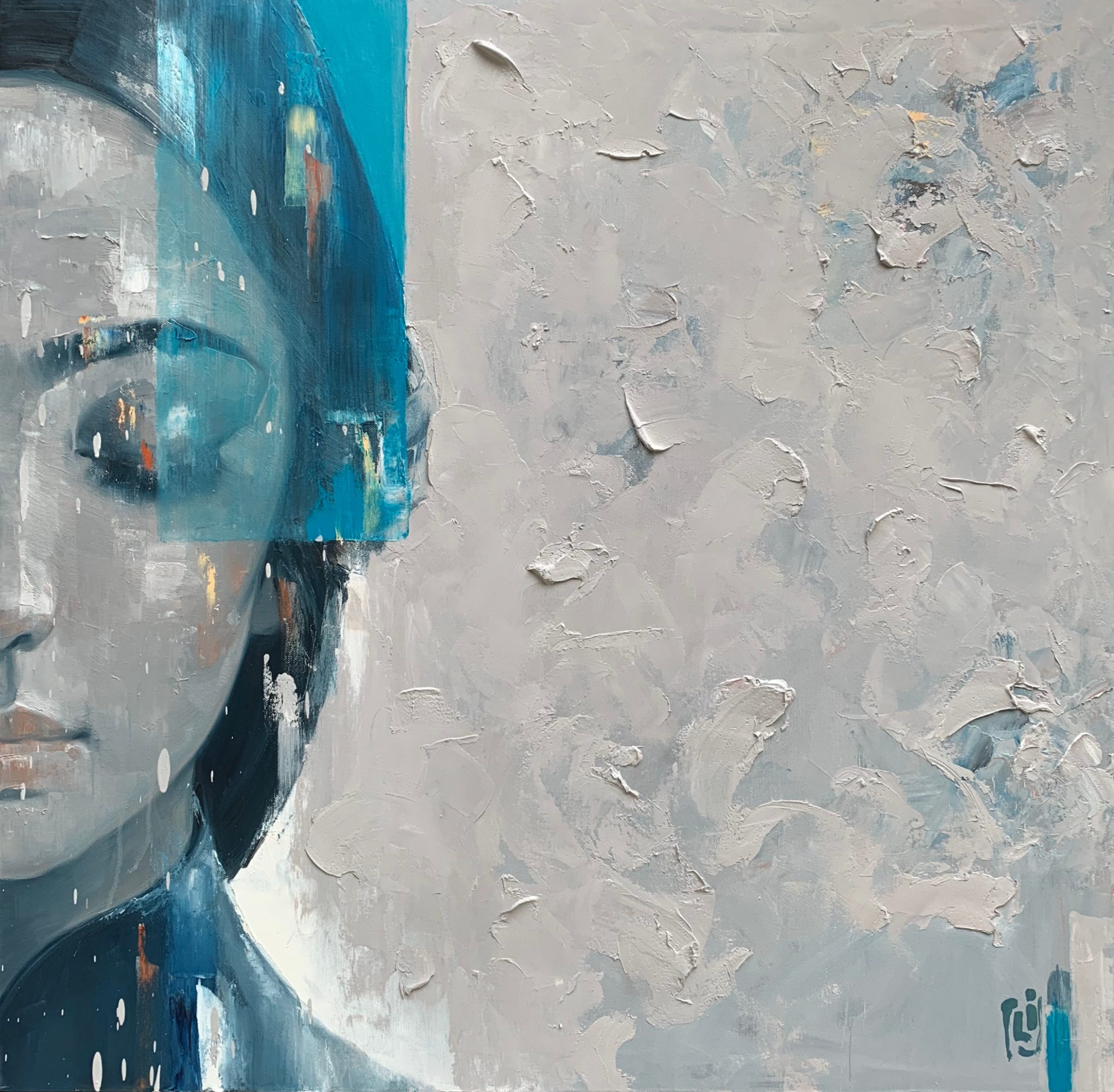Fairs
Meet ArtBlue Studio
Experts in Vietnamese art and founders of ArtBlue Studio in Singapore, Phuong Nguyen and Jacques Renaud walk us through the beginnings and day-to-day workings of their gallery.

Phuong Nguyen and Jacques Renaud outside their gallery, Artblue Studio
Experts in Vietnamese art and founders of ArtBlue Studio in Singapore, Phuong Nguyen and Jacques Renaud walk us through the beginnings and day-to-day workings of their gallery. Find out some of their key artists showing at Affordable Art Fair Singapore from 18 to 20 November 2022 at the F1 Pit Building. At the end of this interview, expect a bigger appreciation for Vietnamese art and more pieces to add to your wish-list!
Hi Phuong and Jacques, when setting up ArtBlue Studio you saw an opportunity to promote Vietnamese art to a new market. Can you tell us a bit about how you got into art why you started the gallery in Singapore?
Phuong: In 2001, I met a big art collector from London who was looking for an assistant in Ho Chi Minh City, where I was living at the time. That was my entry into the art world and the job allowed me to meet and work with countless artists in Vietnam. Through them, I discovered the history of Vietnamese art. The artists would also share with me their personal lives; many lived through war and faced exile; some got the chance to study abroad. Indeed, all of them had fascinating stories to share about their lives and the inspiration behind their art.
I moved to Singapore in 2006 with Jacques. I took the opportunity to introduce Vietnamese art to Singapore by promoting pieces from my own personal collection to local galleries. However, working with the Singapore Art Museum as curator of their Vietnamese art collection inspired me to open my own gallery and become a full-time art consultant.
Singapore is a global city, with people from all over the world calling it home, making it the ideal platform for us to promote Vietnamese art. Vietnamese artists are pioneers of their own artistry and creatives who incorporate modernity without losing touch with tradition. In my opinion, Vietnamese art is a celebration of Vietnam’s unique cultural identity. I wanted to showcase this to the world.

Your artists use quite a wide variety of materials in their art-making processes, from Bui Van Hoan’s use of oil to create a play on light, Ngo Van Sac’s use of wood panels rather than canvas, Dinh Cong Dat’s lacquer on composite works, to Nguyen Khuyen’s woodcut prints. When looking for artists to represent, do you particularly look for variety or new techniques?
Jacques: Vietnamese art is a dazzling fusion of East and West. Variety is built into Vietnamese art! We have to fall in love with the art in order to represent the artist. That is our only criteria.
Phuong: I would say Bui Van Hoan is our most prominent artist in the gallery. Oil landscape painting is a well-established genre but Hoan breathes new life into it. He creates breath-taking pieces through his ingenious manipulation of light. There are layers within his scenes, created by using light, shadow and subtle variations in hue and texture. Combined with his use of distant perspectives and adept concealment of brushstrokes, the resulting painting is one that evokes a meditative silence and tranquillity.
Then there is Dinh Cong Dat, who has taken the traditional Vietnamese art of lacquer and revolutionised it in the form of distinctive sculptures. Every side of his sculpture is different, and it is rich in embellishments such as gold leaf, silver leaf and various natural pigments and intricate designs.
Like him, Nguyen Khuyen has also modernised an ancestral Vietnamese folk art. She specialises in Dong Ho painting, which is folk woodcut painting. She carves a wooden board to create the negative image of the picture. The board will be filled with ink and a sheet of paper applied on it. By rubbing on the back of the paper, a print will be created.

Jacques: Ngo Van Sac is another dynamic artist that we feature. His paint is fire! He sees his art as a collaboration with nature with his use of the earthly elements, wood and fire.
Sac’s portraits are not only unique because of the fire on wood medium, but because the artist has used a very difficult technique to create emotive portraits capturing not only the beauty but the poignant expressions on the faces.

Emerging artist Nguyen Tuan Dung caught our eye, as it did our Singapore Fair Director, Alan Koh, who collected his work in 2018. Can you tell us about Nguyen‘s practice and inspiration?

Phuong: The realism of Nguyen Tuan Dung‘s artwork is striking, and his subjects are very relatable. I believe this is what captured Alan’s imagination in the first place.
Dung draws his inspiration from what he sees and encounters on a daily basis. His bicycle paintings, always transporting goods like flowers and fruits, are well loved. It’s special because bicycles are a familiar means of transportation for most Vietnamese people who use them to make their living.
His subjects are brought to life over a newspaper background, with chiselled details and shadows. By painting on newspaper on canvas, the world’s events become the real canvas on which the artist is painting, so that he can represent the personal lives of the people through the evolving and ever-changing world.
There is a strong element of honesty and storytelling in Phuong Quoc Tri’s paintings which we find ever so intriguing. Can you tell us about the sometimes heart-warming, sometimes melancholy figures he portrays?
Jacques: Phuong Quoc Tri’s portrait paintings are compelling not only because of the muse or the stylistic concerns of the genre, but because he has melded his painting methods with his ability to represent the underlying humanity of the face. Each of his characters tells a story; some of longing, some of hardship, some of a destiny unknown. I liken his works to classical music: we are forced to think, reflect and feel the emotion to come to our own conclusions.

His introverted characters appear to be deep in thought, their lives rich with joy and sorrow. Our eyes are drawn to the figures and we cannot help but search for a deeper understanding of what they are thinking; what can we learn from them? Additionally, his skill in utilising the warm and cool relationships of colour and tone to define the forms of the model is remarkable.
How long have you exhibited with the Affordable Art Fair? And would you say that participation in the global fairs has contributed to the evolution of your gallery?
Phuong: We have exhibited with the Affordable Art Fair for 12 years. We have always cherished our association with the fair. Since Affordable Art Fair has a fantastic reputation and following worldwide, it has been our pleasure to participate in the fair not only in Singapore but also in New York, London and Hong Kong.
We’ve been able to promote and showcase the very best of Vietnamese contemporary art through Affordable Art Fair and have garnered an international following.
Is there anything you’d like to tell art lovers who are new to Vietnamese art?
Phuong: Vietnamese art mirrors the country’s rich culture and history. Vietnamese artists have successfully managed to find an identity over the course of centuries, synthesising European post-impressionist trends with classical Asian style and subjects. The artistic tradition in Vietnam itself is not static; it is a constantly evolving and moving form. As a result, Vietnamese art has thrived, maintaining a uniqueness that is invigorating the global art scene.
Jacques: There’s been an increased recognition of Vietnamese art in recent years. Collectors are interested in diversifying their collection, and are opening up to markets other than China, Indonesia and India.
The young contemporary artists and acclaimed masters in Vietnam and the dynamism of the art scene is now well known. Local collectors and government bodies are also starting to collect Vietnamese art, and art auctions are spreading in the country. These are signs of a general appreciation of Vietnamese art in the coming years and a fertile ground for a very dynamic artistic community.

To meet the team behind Artblue Studio and see their spectacular curation of Vietnamese art in person, mark your diary with the Singapore fair dates (18 – 20 November 2022, F1 Pit Building) and be sure to purchase your tickets!

